Rewilding Europe co-founder Wouter Helmer retired at the end of 2021. Over the last decade, his instrumental involvement with the initiative has given him pride, happy memories, and hope for the future.
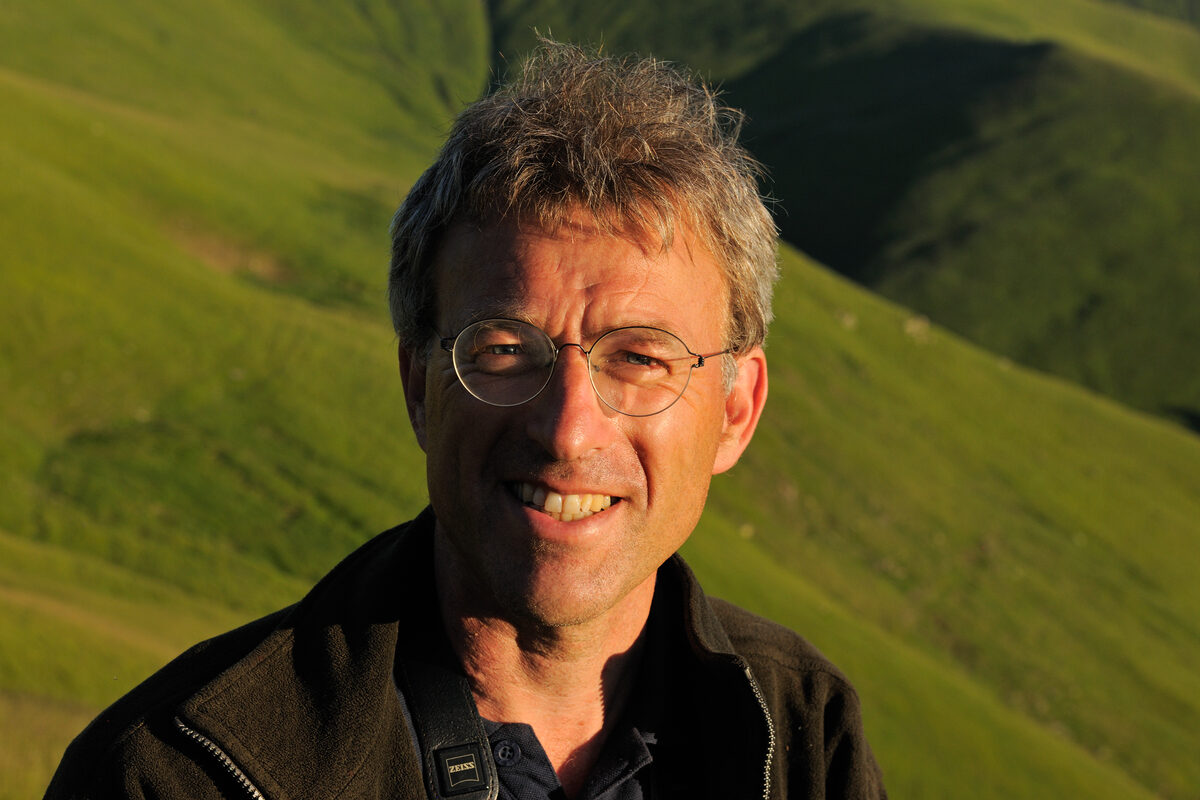
Over the last decade, Wouter Helmer has played a pivotal role in the evolution of Rewilding Europe, and the European rewilding movement in general. Before co-founding Rewilding Europe in 2011, he also co-founded and managed Dutch NGO ARK Nature, which has overseen hundreds of rewilding initiatives since 1989, throughout the Netherlands and in other parts of Europe.
At the end of 2021, Wouter took the decision to retire from Rewilding Europe to concentrate on other work. He will still be available as a consultant on a voluntary basis, and there is no doubt we will call on his rewilding-related expertise on a regular basis. We caught up with Wouter to discuss his thoughts on leaving Rewilding Europe, his reflections on the last 10 years, and his plans for the future.
Back in 2011, did you think Rewilding Europe would evolve as quickly as it has?
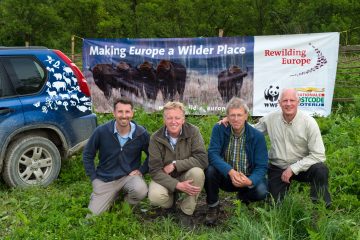
The development of Rewilding Europe has been everything that the co-founders hoped for. Ten years ago, the initiative was all abstract numbers – hectares, outreach, wildlife populations, jobs created. It has been incredibly rewarding to see the realisation of those numbers over the last decade: great colleagues right across Europe, large herds of horses, Tauros and deer roaming free in magnificent wild landscapes, dozens of successfully operating rewilding enterprises.
Of course, things have also gone wrong along the way. Rewilding is a holistic and pioneering approach, in which practical conservation, communications and entrepreneurship all come together. Occasionally this approach has turned out to be too ambitious, which has sometimes led to delays in execution or the need to change approach. Overall though, I am immensely pleased with and proud of how far Rewilding Europe has come in such a short space of time.
Are there any particular milestones or achievements that stand out for you over the last decade?
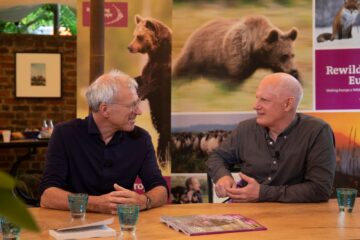
The first real achievement was when we initially announced our ideas back in 2009 and immediately received nominations from more than 30 prospective rewilding landscapes. This convinced us that we were on the right track with our rewilding vision. Following on from this, we quickly gained the trust and support of institutions and funds such as the European Investment Bank, Dutch Postcode Lottery, German Postcode Lottery, and Endangered Landscapes Programme, which also helped us to feel affirmed.
The fact that rewilding has gained so much ground as a new movement within European nature conservation since 2011 is an amazing achievement. From being barely known 10 years ago, it has now become almost mainstream. The need to protect and enhance wild nature has become increasingly recognised in European policy, and is viewed as critically important to our future by people such as David Attenborough and Greta Thunberg. Rewilding Europe has played a twin demonstration and catalysing role, showing what can be achieved on the ground and inspiring others to become involved with rewilding. The fact that rewilding initiatives are popping up everywhere in Europe now, with over 70 members enlisted in the European Rewilding Network, is evidence of this.
Do you have a few particularly fond memories from the last 10 years that you could share with us?
The first bison release in the Southern Carpathians was a special day. I remember the flocking village population loudly singing a welcome song, led by the local priest. Then in the evening everyone dancing together in celebration of this unique wildlife comeback: the villagers of Armeniș, rewilders, the truck drivers who had transported the bison, and journalists from all over the world. It was magical.
What has rewilding given back to you in return for your efforts?
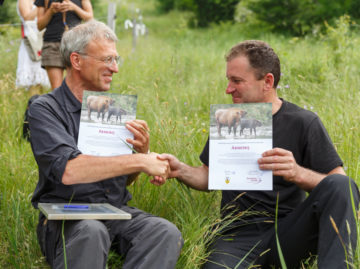
To answer this, you must first know something of my childhood and my pre-Rewilding Europe career. As a boy of four or five I was already fascinated by nature and as a teenager I became very active in local nature groups. Then, 35 years ago, I pioneered some ideas about my own immediate environment – a floodplain near home – with a group of friends. In 1989 our first rewilding project took off – a 2.5-hectare site with three Konik horses – soon followed by the development of a growing network of rewilding areas along Dutch rivers with new partners, and the first projects across the border.
Rewilding Europe has taught me that people from all across Europe grow up with a similar passion for and desire to enhance nature. Over the years it has been a real thrill and privilege to share ideas, successes and failures with other like-minded people as we worked towards a better, wilder, more awe-inspiring continent. And this is something I have come to realise too: European nature is already awe-inspiringly beautiful, and has the potential to become even more so!
The icing on the cake for me was two visits outside of Europe which I was allowed to participate in thanks to Rewilding Europe – one to the US, and the other to southern Africa. These allowed me to not only share ideas with local rewilders, but to immerse myself in some stunning wild landscapes, becoming a little boy once again.
How will you spend your time going forwards?
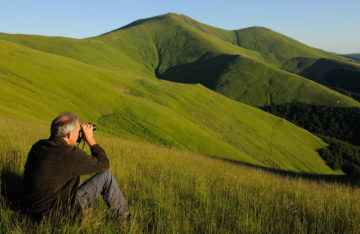
I want to divide my attention into three areas. Firstly, pioneering new rewilding concepts, such as rewilding and health, the connection between wildlife populations and climate change, and making rewilding more investable. Secondly, supporting hands-on rewilding initiatives – such as Rewilding Europe, ARK Nature, Dam Removal Europe and some involving private landowners – by sharing my 35 years of knowledge and experience. And lastly by focusing more on enjoying more experiences in nature itself, which are my ultimate sources of inspiration.
Are you optimistic about the future? What would you like rewilding Europe to have achieved by 2030?
Yes, as wild nature and rewilding offer solutions to so many of the ecological and socio-economic problems and challenges that we face at the moment, such as climate change, biodiversity decline, better healthcare, and the need for sustainable rural economies. I would like to see Rewilding Europe continue with its hopeful way of working, but less dependent on one-off funds and subsidies and better supported by sustainable financing and business models, which directly link rewilding with the major social issues of our time.
The younger generation are increasingly becoming involved with rewilding and driving the movement forwards. Does that excite you?
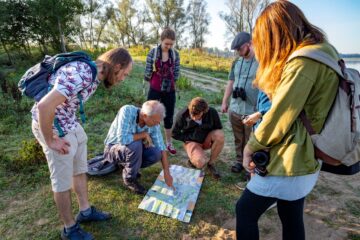
Of course! It shows that rewilding is a story of hope, with a real future perspective.
But I also want to give young rewilders some advice and tips. Firstly, think carefully about what you are doing: does it ultimately benefit nature itself? Always link ideas to practice, because most people don’t read reports, but they can see what you mean in real-world examples.
Secondly, dare to take risks by letting go of nature, involving unexpected partners, and testing new business models. You learn at least as much from your mistakes as from your successes and share your successes if you have them.
Lastly, translate your ecological insights and solutions into the language of other economic sectors. This is the only way to show how nature-based solutions can work in the real world, mobilise game-changing levels of investment, and really scale up rewilding.
